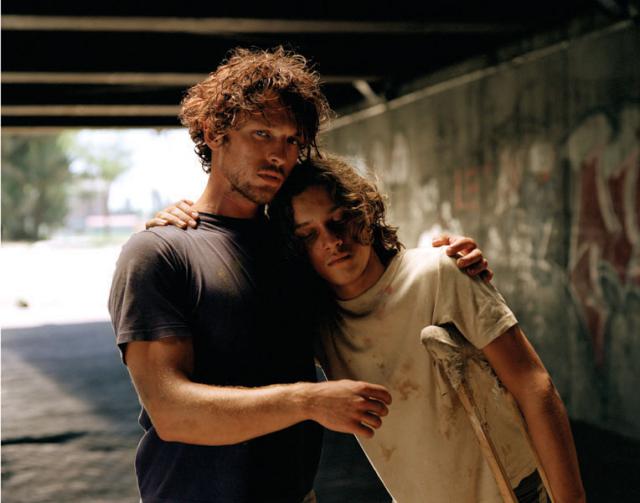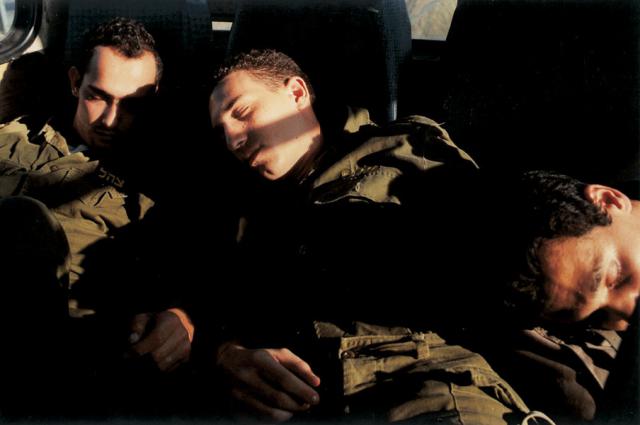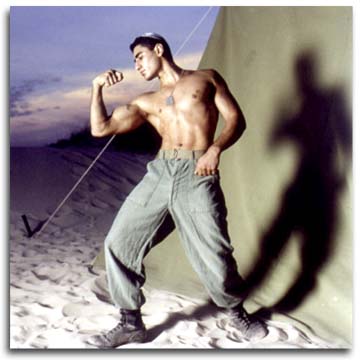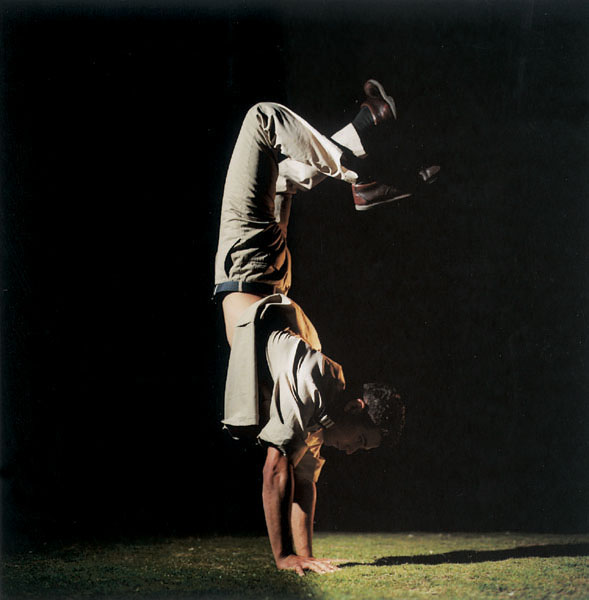Serendip is an independent site partnering with faculty at multiple colleges and universities around the world. Happy exploring!
Notes Towards Day 19: Exploring Masculinities

Lucinda Williams, What If (via holsn39)
Hedwig and the Angry Inch, Origin of Love (via Owl:
"our way of categorizing the world does not make
sense to the immense diversity within society")
animation on bodies that don't fit in
(via dshetterly)
Exploring Masculinities
![]()

"sometimes 'she' is a 'he,' trapped by the
limitations of our imaginations"
(Staceyann Chin, via Owl)
"There's a new kind of masculinity being
born out of a feminist sensibility"
(Kate Bornstein, Gender Outlaw, 245).
I. Welcome to Howard Glasser (thanks for coming!)
source for the Kimmel essay--
and for a new spring course on Gender, Sex and Education,
which may interest some of you
II. Kristin re: catching up on that last set of papers?
III. Stepping off from eshaw's insight that we are actually doing this backwards/illogically:
should have first constructed masculinity, then deconstructed it, only then transcended gender...
IV. Given those real-time constraints,
I think we might still be able to keep all these dimensions in play:
How does Kimmel's essay on "Masculinity as Homophobia" look to you,
when seen through the lenses Kate Bornstein provided us,
in text, in person and in performance?
What might they say to one another?
What might we say to each of them?
Beginning w/ a review of (some of) what we learned from Kate's visit:
elephant: there she was, being completely frank about who she was and what she did to get there. and i was amazed....so much of what she said (like that the term "ally" was bullshit or gay marriage is not the right political fight) seemed so crazy but as she explained it, made so much sense.
ebock: "shedding my identities like I shed those cells..." [and] talking with justouttheasylum about how its so difficult to wrap our minds around the idea of someone changing continuously throughout their life....It takes a lot of work to just "be who you are"
cantalope: when it comes to my physical form, my gender expression, or anything along those lines, I feel free.
Owl: I think that I would like to think that I control my mind but now am I not sure. I think the exercise helped me see my mind is still constricted and defined by what we already think we know.
In describing the process that she went through she becomes a contradictory self, because she herself puts her body in a categories: first a man, then a woman, then a lesbian....
Karina: What happens is the disruption from the norm lacks a name, is neither the expected norm nor the one known radical (something outside of the he-she binary)? If that unnamed radical is so elusive it can’t even be named, then naturally it makes sense ...to assume that it cannot possibly exist.
dshetterly: NYTimes article on "emo," etc.: "'gender is a creative playing field'....this is too much for some educators, who say high school should not be a public stage to work out private identity issues....'self-expression will always have to be at least partially limited, just as it is in the workplace'"....I think that is what all of this deconstruction is about; trying to figure out how much of what we want to do is the product of social constructs.
What else do you want to say about her visit,
esp. re: what might be helpful as we think about what
masculinity is, how it is made and might be un-made?
IV. Let's try now looking @ a couple of images through the
lenses provided both by Kate and by Kimmel.
Write down the first three words that come to you as you look @ them.
I will show them only briefly, in order to encourage you not to
think about your answers, but let them arise "straight" from your unconscious…






What did you see?
What did you learn about yourself?
About your perceptions of masculinity?
About the perceptions of others in the group?
What are we learning, as a group, about varieties of perception?
What are we learning, as a group, about
the possibility of changing our perceptions?
All these images are early photographs by Adi Nes, who has said that the inspiration for his photography is partially autobiographical: “My staged photographs are oversized and often recall well-known scenes from Art History and Western Civilization combined with personal experiences based on my life as a gay youth growing up in a small town on the periphery of Israeli society.” Nes uses homoeroticism and sleeping, vulnerable figures to subvert the stereotype of the masculine Israeli man. I chose these images because I think they make masculinity—as I understand it, as it is generally understood in our society—ambiguous.
When I first started doing feminist scholarship, in graduate school @ Penn in the 1970s, it was called Women’s Studies; our goal was to try and bring the experiences of women into fields like biology and psychology and history and literature, where they had not been represented or studied. The first articles I published were all about giving attention to previously unnoticed work by 19th century American women.
But then we started to recognize that the gender systems that socialized women to behave in certain ways had been very damaging to men all around the world, too. A subfield of Men’s Studies emerged, and gradually programs like ours, which looked @ how people of all sorts came to be gendered, came to be called Gender Studies….
….the gender studies we're doing today focuses on the formation of men. We’re thinking, talking and spending some time being silent about the ways in which boys are shaped into men. How they are taught to be in the world. Whether we like those ways of being. And whether they might be changed. And how.
Cf. The American Prospect essay that Karina linked to:
it's about the men of your generation "rejecting toxic masculinity"--
"But what are these young men saying yes too?
We've all failed to envision an alternative....
it's dangerous that they don't have a clear picture
of what they want to build in its place."
V. Let's start (again, a third time!) by listening to three
passages from Michael Kimmel's "Masculinity as Homophobia":
“just let two of the guys get together an’ you won’t talk…You’re all scared of each other, that’s what. Evr’one of you’s scared the rest is goin’ to get something on you” (Curley’s wife, speaking in John Steinbeck’s 1937 novel, Of Mice and Men).
“…the structure at the bottom of the male psyche is still as firm as it was twenty thousand years ago” (Robert Bly, Iron John: A Book About Men, 1990).
In 1882, “Senator Henry Clay had called the United States ‘a nation of self-made men.’ What does it mean to be ‘self-made’? What are the consequences of self-making for the individual man, for other men, for women?"
More from Kimmel:
Masculinity must be proved, and no sooner is it proved than it is again questioned and must be proved
again—constant, relentless, unachievable….”
The hegemonic definition of manhood is a man in power, a man with power, and a man of power. We equate manhood with being strong, successful, capable, reliable, in control…..Our culture’s definition of masculinity is thus several stories at once. It is about the individual man’s quest to accumulate those cultural symbols that denote manhood, signs that he has in fact achieved it. It is about those standards being used against women to prevent their inclusion in public life and their consignment to a devalued private sphere. It is about the differential access that different types of men have to those cultural resources that confer manhood and about how each of these groups then develop their own modifications to preserve and claim their manhood. It is about the power of these definitions themselves to serve to maintian the real-life power that men have over women and that some men have over other men.
Quoting Robert Brannon's
“The male sex role—and what it’s done for us lately” (1976):
1. “No Sissy Stuff!”
2. “Be a Big Wheel.”
3. “Be a Sturdy Oak.”
4. “Give ‘em Hell.”
American masculinity is a relentless test. The chief test is…”not being like women”….Historically and developmentally, masculinity has been defined as…the repudiation of femininity.
We are under the constant careful scrutiny of other men. Other men watch us, rank us, grant our acceptance into the realm of manhood. Manhood is demonstrated for other men’s approval. It is other men who evaluate the performance….Masculinity is a homosocial enactment. We test ourselves, perform heroic feats, take enormous risks, all because we want other men to grant us our manhood.
If masculinity is a homosocial enactment, its overriding emotion is fear…..”The lives of most American men are bounded…by the constant necessity to prove to their fellows, and to themselves, that they are not sissies, not homosexuals.”
“The tradition of all the dead generations weighs like a nightmare on the brain of the living”
(Karl Marx, 1848).
“The birthright of every American male is a chronic sense of personal inadequacy”
(Woolfolk & Richardson, 1978).
The nightmare from which we never seem to awaken is that those other men will see…that in our own eyes we are not who we are pretending to be. What we call masculinity is often a hedge against being revealed as a fraud…Our real fear “is…being ashamed or humiliated in front of other men.”…this, then, is the great secret of American manhood: We are afraid of other men. Homophobia is a central organizing principle of our cultural definition of manhood….the fear that other men will unmask us, emasculate us, reveal to us and to the world that we do not measure up, that we are not real men….Our fear is the fear of humiliation. We are ashamed to be afraid.
….the single most evident marker of manhood…is the willingness to fight.
….our peers are a kind of gender police….As young men we are constantly riding those gender boundaries, checking the fences we have constructed on the perimeter, making sure that nothing even remotely feminine might show through.
Men commit suicide three times as often as women….“invariably because of perceived social humiliation”…In one survey, women and men were asked what they were most afraid of. Women…were most afraid of being raped and murdered. Men...were most afraid of being laughed at.
Homophobia is intimately interwoven with both sexism and racism. The fear—sometimes conscious, sometimes not--that others might perceive us as homosexual propels men to enact all manner of exaggerated masculine behaviors and attitudes to make sure that no one could possibly get the wrong idea….Masculinity becomes a defense against the perceived threat of humiliation in the eyes of other men, enacted through a “sequence of postures”….the reigning definition of masculinity is a defensive effort to prevent being emasculated…..This perspective may help clarify a paradox in men’s lives, a paradox in which men have virtually all the power and yet do not feel powerful.
Men’s feelings…come inevitably from the discontinuity between the social and the psychological, between the aggregate analysis that reveals how men are in power as a group and the psychological fact that they do not feel powerful as individuals.
…the purveyors of the mythopoetic men’s movement…use the image of the chauffeur to describe modern man’s position….to the observer, the chauffeur looks as though he is in command. But to the chauffeur himself…he is merely taking orders. He is not at all in charge….But there is a missing piece to the image…the person who is giving the orders is also a man…we have a relationship between men….men’s experience of powerlessness is real—the men actually feel it and certainly act on it--but it is not true, that is, it does not accurately describe their condition….this contradictory experience of social and individual power.
[Remember Sherry Ortner,in "The Problem of 'Women' as an Analytic Category,"
calling attention to the "big man bias"--> applying the privileges of elites to male
actors in general, most of whom are excluded from leadership and public initiative?]
Cf. also
Men's Group: Movie Review
International Men's Day
For Thursday, finish Chris Ware's graphic novel, Jimmy Corrigan
Think about it through the lenses of Adi Nes, Michael Kimmel, Kate Bornstein....
as well as our earlier discussions of graphic novels of Neil Gaiman.


